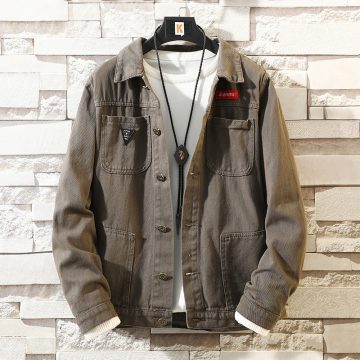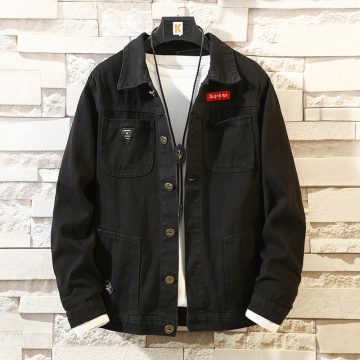How to choose fabrics for jacket customization? Generally speaking, we will choose high-density fabrics, laminated fabrics and coated fabrics for the fabrics of customized jackets. So, which fabric is the best choice for making jackets? What are the advantages and disadvantages of various fabrics?
The first is high-density fabrics. The advantages of high-density fabrics are mainly good air permeability, and the fabrics are very soft and light. This kind of fabric is mainly woven from ultra-fine fibers, and it is widely used in outdoor clothing. As the waterproof performance of high-density fabric itself is relatively general, the tear resistance is also relatively ordinary, so when it is used as an outdoor clothing fabric, it needs to go through some special treatments to ensure the overall strength of the fabric. This kind of high-density fabric rarely appears alone when used as a jacket fabric, and it is woven with other fabrics, so that it can give play to the characteristics of the jacket.
The second is laminated fabric, which is a waterproof and breathable fabric, but it is more difficult to use laminated fabric as a jacket fabric. Therefore, the price of jackets made of this fabric will be relatively high, and customers need to make a reasonable choice according to their own sports scenes.
The bottom layer is a layered fabric, which is a lot of fabrics currently used in jackets on the market. This kind of fabric is made of a microporous breathable layer on the surface of the jacket to ensure the waterproofness of the clothes. However, because the coated fabric has the characteristics of low moisture permeability and low water pressure resistance, the waterproofing performance of the jacket is relatively weak at the same time.
How to choose fabrics for jacket customization is indeed a lot of exquisiteness, because it involves a lot of fabric components and types. When we choose fabrics, the first thing we need to consider is its warmth retention and water resistance. Take the warmth retention for example. Although the warmth retention is closely related to the thickness of the fabric, outdoor sports do not allow clothing to be too heavy. Therefore, it must be warm and light to meet the special requirements of outdoor sportswear. The common method is to add special ceramic powders such as chromium oxide, magnesia, zirconia, etc. to the spinning solution of synthetic fibers such as polyester, especially nano-level fine ceramic powders, which can absorb sunlight and convert it into heat energy. It can reflect the far infrared rays emitted by the human body, so it has excellent heat preservation and heat storage performance.








